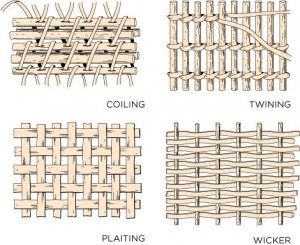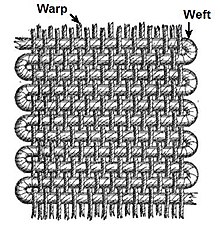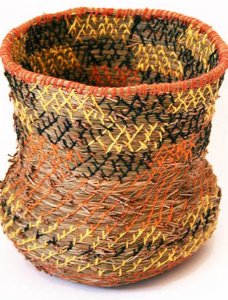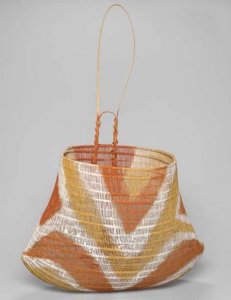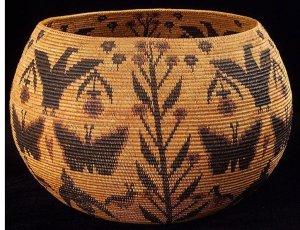Basket weaving is a specialized handicraft for making utilize the product for the people from the plant material. It requires professional skill and knowledge. Weaving is a repetition process; in which two distinct sets of material is interlaced to form a basket. The vertical threads are called the wrap and other called weft.
Basket Weaving
Since a thousand years from now people using these artifacts for daily utilization like those who live near rivers to store their fishes and hunting forays. Nowadays it is used as a storage container like carries bags for vegetable, fruits, etc., also used for carrying babies. This is made up of various materials which are pliable and can be cut into any size and shape according to our use for a needed pattern.
Making Process :-
A) Material Used: – There are many types of resources and materials that can be used to weave a basket, like various kinds of tree bark. For example, grasses, bamboo, vines, oak, willow, reeds, and honeysuckle are all commonly used materials for weaving. When choosing a suitable material for basketry, the flexibility of the fibers is the most important aspect. If the material is too hard, it will not be able to flex enough to be woven into tight coils and through small spaces.
B) Basic Process: – The basic process of basket making involves carefully weaving strands of fiber over and under each other to create a round shape. A simple coil basket starts out as a thick piece of fiber that is shaped into a basic coil while a thinner, flexible fiber is woven around it. Wicker baskets are more difficult to master. They start out as a series of stakes, also known as spokes, which radiate from the bottom of the basket – these are used as the supporting frame. Then, a series of strands are woven over and under the spokes to create the sides of the basket.
C) Techniques: – There are four basic weaving techniques are used to make baskets: wicker, plaiting, twining, and coiling. Wicker, plaiting and twining all interlace wefts (horizontal elements) and warps (vertical elements), but each technique brings to basketry subtleties of design, colour, and form. Coiling is more like sewing.
Each of the basic weaves has numerous variations, and weavers sometimes use several variations on a technique in a single basket or combine two or more techniques. Ultimately, the beauty of a basket’s weave reveals the weaver’s creative vision and technical adeptness at both preparing her materials and manipulating them into a basket form.
All around the world basket weaving is different according to their culture and geographical position. They add their own culture, religious for making a unique product. The tools and technologies attached to weaving techniques reflect the geographical location of the many and varied culturally different groups. For example,
The picture had shown the basket of Epic of Gilgamesh, a heroic tale from ancient Mesopotamia which is founded in the ancient wisdom-tradition of humankind some two thousand years before the Christ event.
In the southern rainforests of Queensland in Australia Abe Murieta (b1952-) an eminent basket maker from the Rainforest Barna of the Girramay people made this splendid number now in the collection of the Queensland Art Gallery.
Basket woven by Miwok-Mono Paiute Native American artist Lucy Telles (1870/85 – 1955/6), active in the Yosemite Valley region, California courtesy Smithsonian Institutes’ National Museum of the American Indian
Conclusion:-
Basket weaving is handicraft art used since thousand years ago where there is no modern technology helps us creating a daily routine product like carrying bags and to store items also they are used in home decor items.


